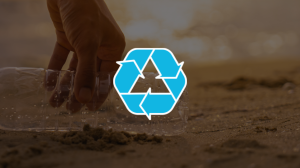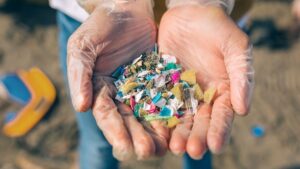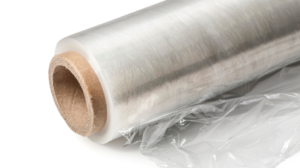What will we do with all that plexiglass after the pandemic?
At the height of the pandemic, the transparent, shatter-resistant material was the go-to solution for grocery stores, sports arenas, restaurants, schools, hospitals, or anywhere one might catch the SARS-CoV-2 virus from large droplets in the air. Plexiglass even played a starring role in the 2020 US vice presidential debate.
Demand for plexiglass spiked so dramatically last year that manufacturing plants working round-the-clock could barely meet the demand. Perspex, a UK company which the holds a patents to plexiglass, announced last year that they were ramping up production by 300% in February and March to meet the demand. One US manufacturer told NPR that they sold a year’s worth of acrylic sheets in two months.
Is all that plexiglass headed for landfills now?
As parts of the world snap back to normalcy, plastic partitions are being taken down. Now facilities managers are puzzling over what to do with their stockpiles of plexiglass. Left without a viable plan, tons of non-degradable plastic partitions will likely end up in a landfill.
Industrial design students at the Iowa State University have spent the past semester grappling with this problem. In a course taught by Daniel Neubauer, professor of industrial design, they’ve been coming up with ideas for the afterlife of acrylic partitions they found around the university.
Non-bio degradable by design, plexiglass or poly methyl methacrylate isn’t easy to recycle. Finding viable uses for plexiglass after the pandemic is especially imperative because producing them already takes a significant amount of energy.
“Acrylic sheets have a significant environmental impact,” Antonella Ilaria Totaro, a circular economy expert from the University of Turin, writes in the blog Renewable Matter. “In addition to the fossil materials used to produce plexiglass, sunlight hitting the sheets releases carbon dioxide particles into the atmosphere. Because of this, for many years scientists have been highlighting the need to reduce the use of acrylic sheets as much as possible.”
What can one make with plexiglass? Almost anything, says Neubauer. “Plexiglass is the clearest, cheapest, most glass-like material out there,” he explains. “We did a lot of experimentation with it. Can it be cut up? Can it be formed? Can it be remolded? Can it be melted down and used in some kind of new way that we traditionally stay away from because it’s so hard to do? Can it be ground up? And the answer to the most of these questions was ‘yes, but.’ It was really interesting to see the possibilities.”
His students made simple objects like desk storage caddies, small shelves, and key chains. The most ambitious experiment involved grounding up and melting the acrylic sheets to make commemorative graduation rings—a fitting souvenir for students robbed of a proper commencement ceremony due to the pandemic.
When handled correctly, Neubauer says that plexiglass can be used to make larger pieces of furniture, like chairs or speaker podiums, like one student did.
Neubauer says the group learned that plexiglass tends to lose its glass-like quality when melted and reconstituted. “You have to lower your expectations of what you might get when you’re doing certain processes, but that doesn’t mean there’s not a hundred other things you can make with it.”
Finding creative uses for discarded materials evokes the a long tradition of designers concerned with consumption. Fashion designers are particularly adept at salvaging goods destined for the landfill, Neubauer notes. For instance, clothing designer Daniel Silverstein, who goes by the monicker “Zero Waste Daniel,” scavenges for materials in New York’s fashion district and makes one-of-a-kind pieces out of what he finds.
Similarly artist Nicole McLaughlin constructs shorts from old beanies or shoes from old Nike shoes and schoolbags. On a commercial scale, French sneaker brand Veja makes running shoes from plastic bottles, and Eileen Fisher makes beautiful tapestries out of discarded garments.



